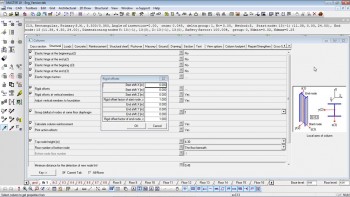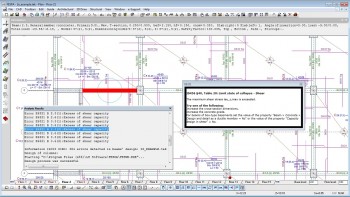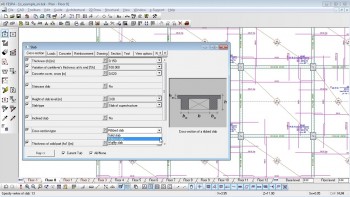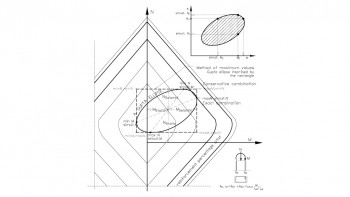Structural design of earthquake resistant structures with Fespa IS – software for civil engineers
With Fespa IS structural design and analysis software, the civil engineer has the ultimate control of the analysis and design of earthquake resistant structures.
Fespa IS implements the Indian Standards:
- IS 1893: 2002
- IS 13920: 1993
- IS 456: 2000
The civil engineer has in their hands the best tool for designing earthquake resistant structures provided in areas of medium or high seismicity.
All structural members are designed according to the selected standards, the material in use and the results of the analysis.
The design procedure starts automatically after the analysis. After all entities (slabs, columns, footings, beams, etc) have been checked an error record is created and is displayed on screen. Fespa IS helps the design engineer to locate the members that failed during the analysis and suggests ways of resolving the error that led to the specific failure. An error or warning message appears in the results window and by double clicking on that error or warning, the relevant member (slab, column, beam and footing) is highlighted on the screen.
Slabs
This method of slab calculation offers to the program all the necessary data for the automtic calculation of effective width of beams” flange bf according to IS456 considering explicitly the beam length and the dimensions of the adjacent slabs.
Columns
- Dynamic analysis method addresses seismic actions on buildings realistically. However, special treatment for the derived results used for design hat to be considered, as the three maximum component forces M1, M2, N are not applied simultaneously to columns.
- The «probable simultaneous values» method of action effects according to A. Gupta is used for the calculation of columns” under biaxial bending and axial force.
- Fespa IS implements the Gupta method instead of the standard quadratic superposition leading to economy in the calculated reinforcement.











